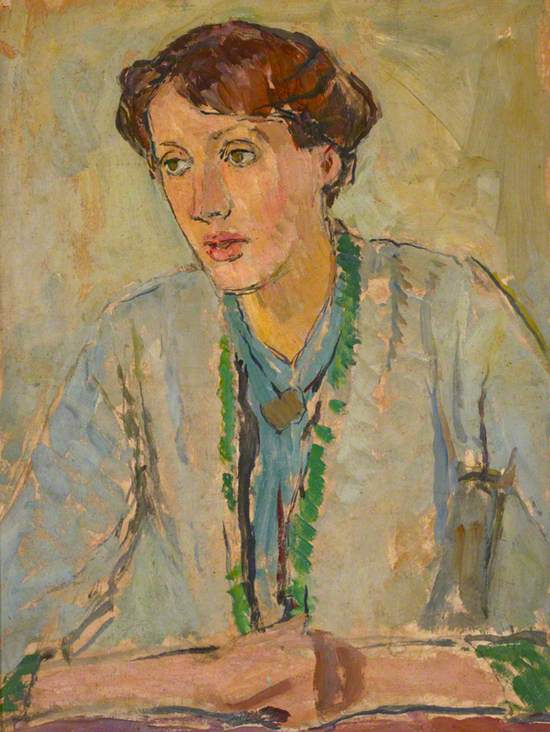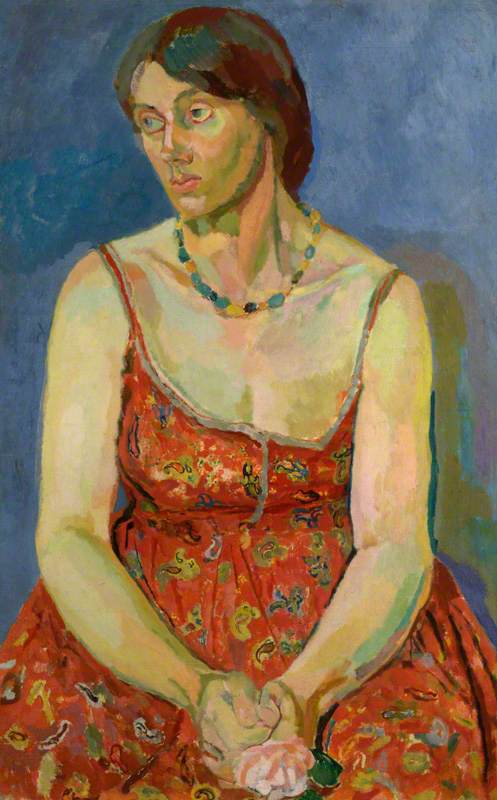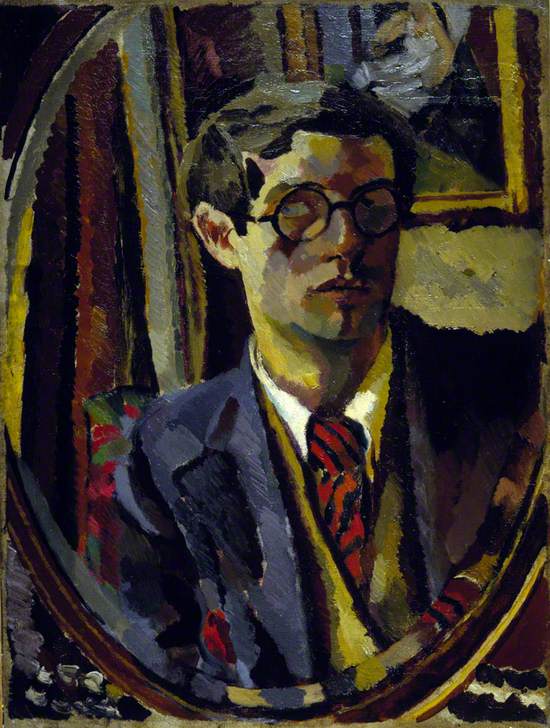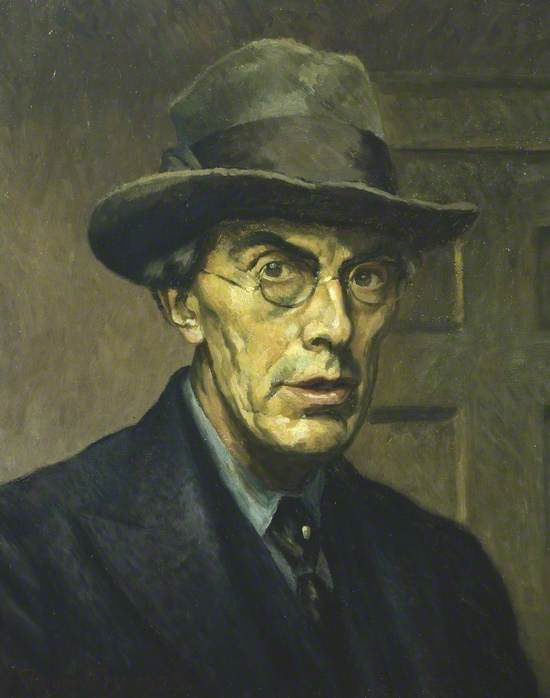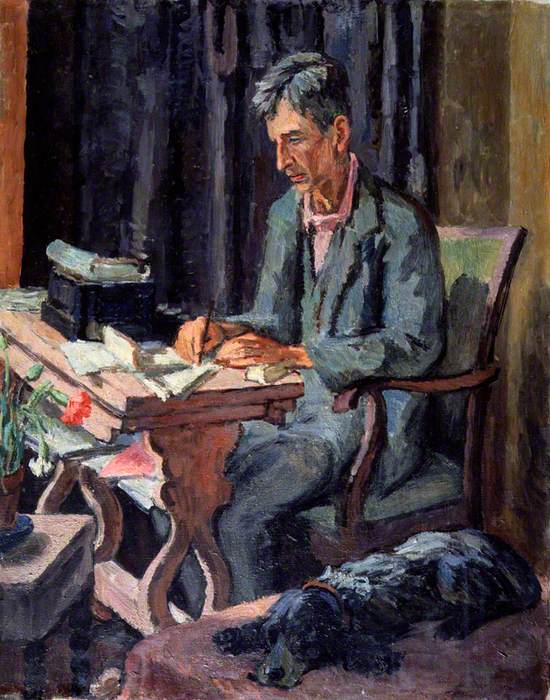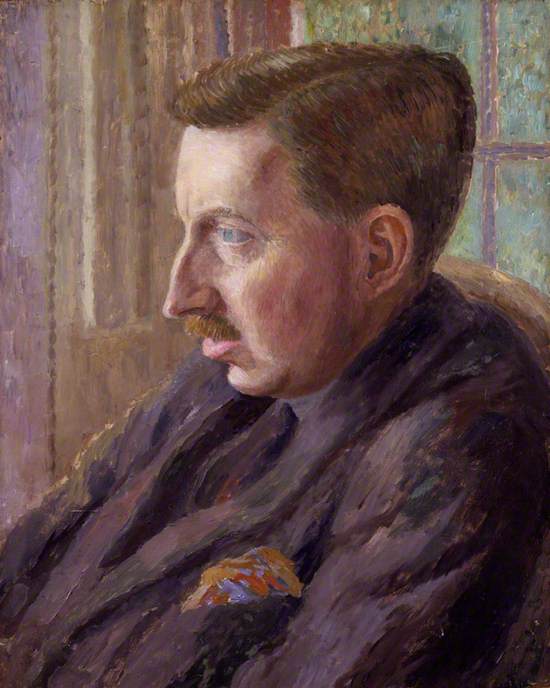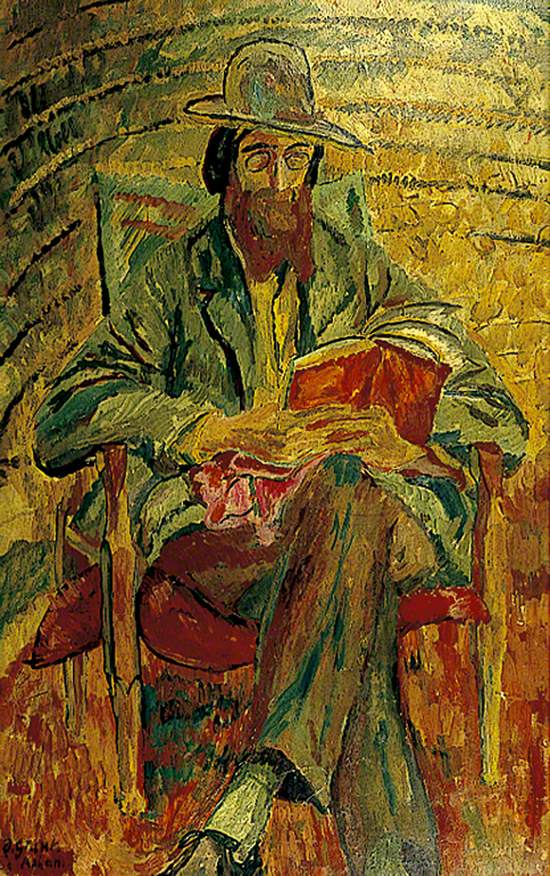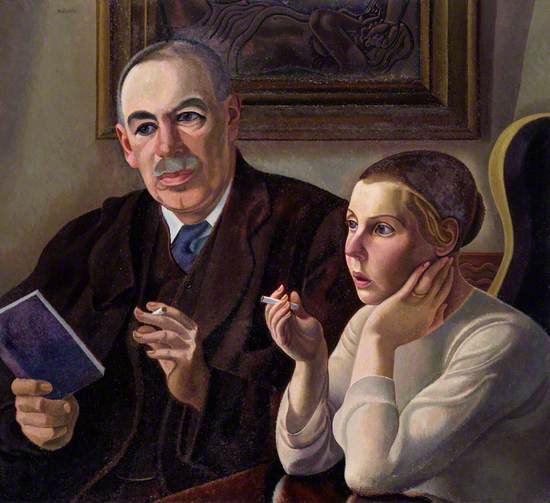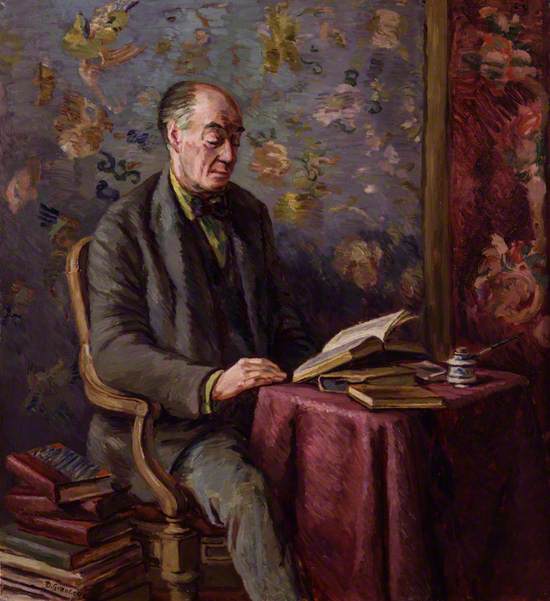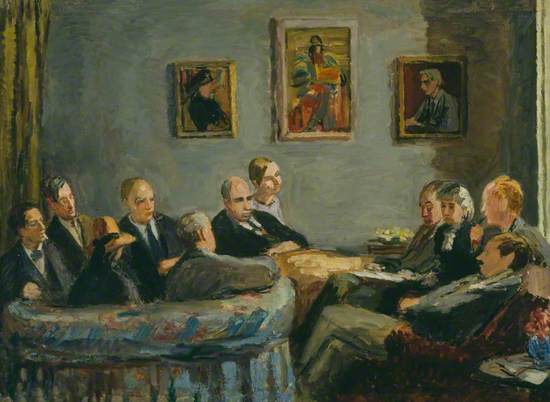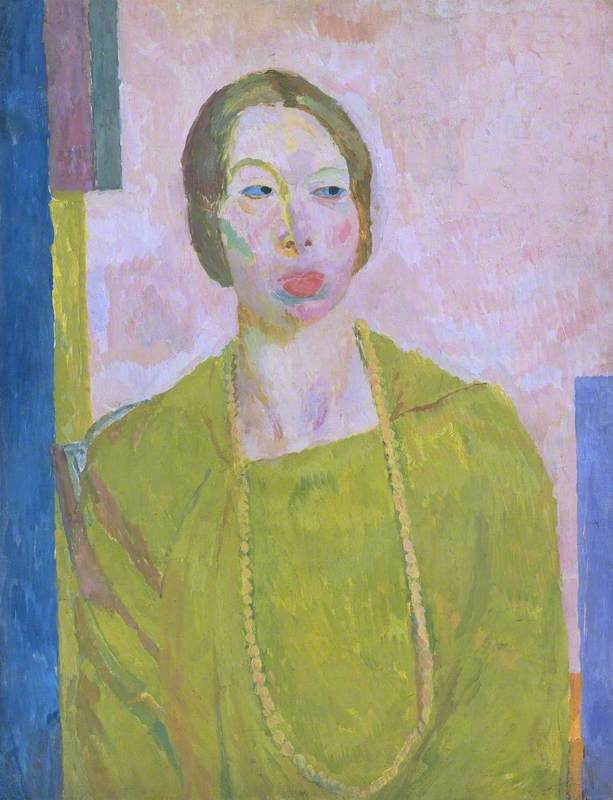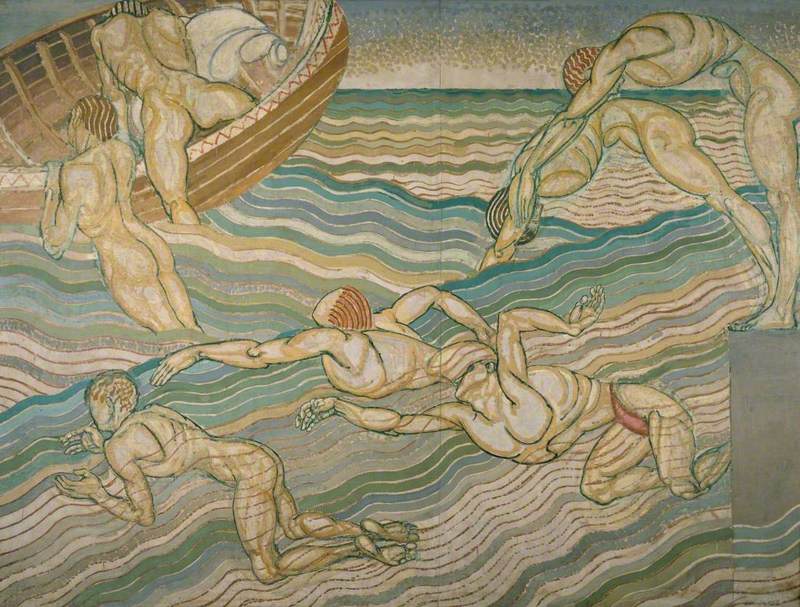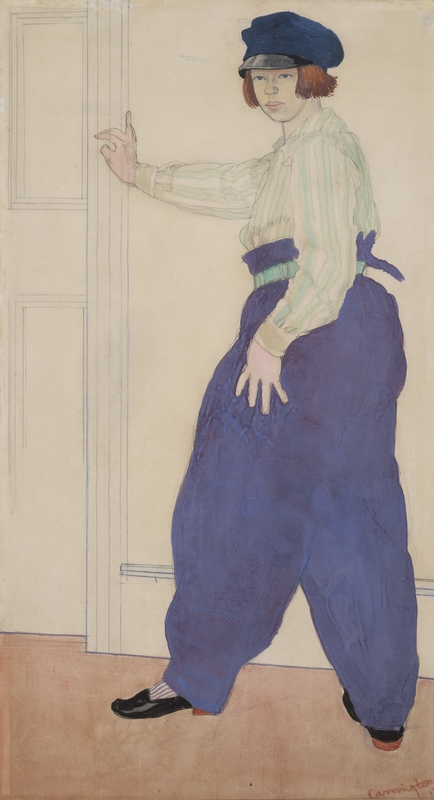A quick guide to the members of the Bloomsbury Set – a group of artists and writers who lived or worked near London’s Bloomsbury area, and came to be known for their bohemian lifestyle, liberal politics and their modern attitudes towards sexuality. Although there were many people in the wider Bloomsbury orbit, it is generally accepted that there were ten core members: writer Virginia Woolf, her husband Leonard Woolf, artist Vanessa Bell, her husband Clive Bell, artist Duncan Grant, artist and critic Roger Fry, economist John Maynard Keynes, critic Desmond MacCarthy, writer Lytton Strachey and writer E. M. Forster.
Virginia Woolf (1882–1941)
Virginia Woolf is today perhaps the most famous of the Bloomsbury Group. The author is known for her works such as Mrs Dalloway (1925), To the Lighthouse (1927), Orlando (1928), A Room of One's Own (1929) and The Waves (1931). This painting from around 1912 is by her sister, Vanessa Bell.
Vanessa Bell (1879–1961)
Oil on panel
H 55 x W 45 cm
National Trust, Monk's House
.
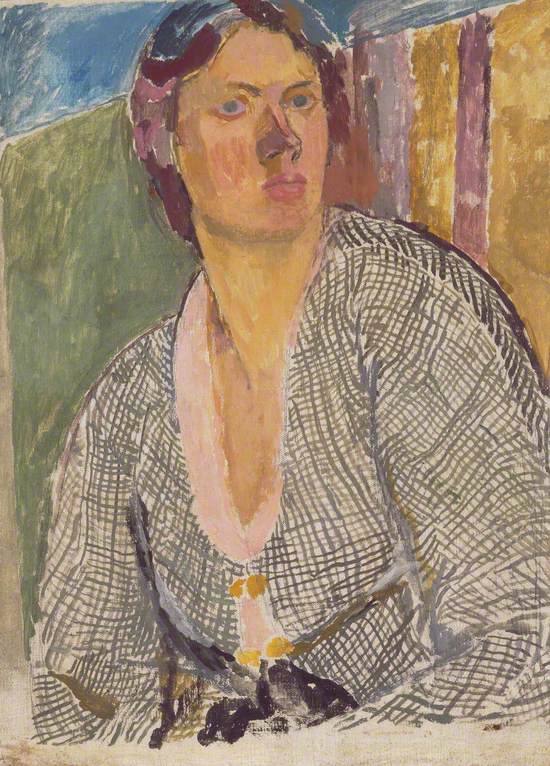
Vanessa Bell (1879–1961)
The artist Vanessa Bell was Virginia Woolf's older sister. This painting is a self-portrait from around 1915.
Vanessa Bell (1879–1961)
Oil on canvas laid on panel
H 63.8 x W 45.9 cm
Yale Center for British Art
Vanessa Bell (1879–1961)
Here Vanessa Bell is portrayed by her lover, fellow artist Duncan Grant.
Duncan Grant (1885–1978)
Oil on canvas
H 94 x W 60.6 cm
National Portrait Gallery, London
.
Duncan Grant (1885–1978)
And this is Duncan Grant's self portrait from around 1920. Bell and Grant were key figures in the Bloomsbury Group.
Duncan Grant (1885–1978)
Oil on canvas
H 61 x W 45.8 cm
National Galleries of Scotland
Clive Bell (1881–1964)
Clive Bell was the husband of Vanessa Bell. They married in 1907 and had two sons, Julian (1908–1937) and Quentin (1910–1996), but their marriage had ended by the beginning of the First World War. Although Vanessa embarked on her relationship with Duncan Grant, and Clive had affairs with other women, the two never officially separated or divorced. This portrait of Clive Bell is by another Bloomsbury Group member, Roger Fry.
Roger Eliot Fry (1866–1934)
Oil on canvas
H 73.4 x W 60 cm
National Portrait Gallery, London
Roger Fry (1866–1934)
This is Bloomsbury Group member Roger Fry's self portrait from 1928. As well as being an artist himself, Fry was instrumental in popularising modern art in Britain, and coined the term 'Post-Impressionism'.
Roger Eliot Fry (1866–1934)
Oil on canvas
H 45.7 x W 37.1 cm
The Courtauld, London (Samuel Courtauld Trust)
Leonard Woolf (1880–1969)
Virginia Woolf's husband Leonard was also a member of the Bloomsbury Group. A writer, editor and publisher, he was joint editor of The Political Quarterly (1931–1959), and was active politically, advising the Labour Party, advocating democratic socialism, and drafting an early blueprint for the League of Nations.
Vanessa Bell (1879–1961)
Oil on canvas
H 81.3 x W 64.8 cm
National Portrait Gallery, London
E. M. Forster (1879–1970)
Author E. M. Forster is best known today for his novels A Room with a View (1908), Howards End (1910) and A Passage to India (1924). His novel Maurice (written in 1913–14, published posthumously in 1971) explored same-sex love and has become a classic of gay literature.
Dora Carrington (1893–1932)
Oil on canvas
H 50.8 x W 40.6 cm
National Portrait Gallery, London
Lytton Strachey (1880–1932)
Lytton Strachey was an author and biographer, known for his Eminent Victorians, which famously used irreverence and wit on his subjects: Cardinal Manning, Florence Nightingale, Thomas Arnold and General Charles Gordon.
John Maynard Keynes (1883–1946)
John Maynard Keynes was one of the most important and influential economists of the twentieth century. This portrait shows him with his wife, the Russian Ballerina Lydia Lopokova.
William Patrick Roberts (1895–1980)
Oil on canvas
H 74 x W 81 cm
National Portrait Gallery, London
.
Desmond MacCarthy (1877–1952)
Desmond MacCarthy was a British writer and the foremost literary and dramatic critic of his day.
Duncan Grant (1885–1978)
Oil on canvas
H 91.4 x W 84.5 cm
National Portrait Gallery, London
.
The Memoir Club
The Bloomsbury Set originally met at 46 Gordon Square around 1905. In 1920, 15 years later, The Memoir Club began to meet. This group portrait from the early 1940s depicts eleven key figures associated with Bloomsbury – Duncan Grant, Leonard Woolf, Vanessa Bell, Clive Bell, David Garnett, John Maynard Keynes and Lydia Lopokova, Desmond and Molly MacCarthy, Quentin Bell and E. M. Forster. On the wall behind are painted portraits of past members of the group: Virginia Woolf and Lytton Strachey by Duncan Grant, and Roger Fry by Vanessa Bell. It also includes David Garnett and members of the younger generation, such as Quentin Bell, who were later admitted.
Vanessa Bell (1879–1961)
Oil on canvas
H 60.8 x W 81.6 cm
National Portrait Gallery, London
